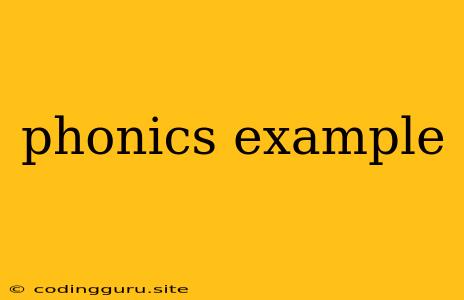Phonics: Unlocking the Code to Reading and Writing
Phonics is a foundational skill that helps children learn to read and write by understanding the relationship between sounds and letters. It's a key element in early literacy development, laying the groundwork for fluent reading and confident writing. But what exactly is phonics, and how can you put it into practice?
What is Phonics?
Phonics focuses on the connection between sounds and letters or groups of letters (graphemes). By learning the sounds that different letters and letter combinations make, children can decode words and sound them out. This process is like cracking a code, where each letter or group of letters represents a specific sound.
Phonics in Action: Examples
Imagine you're introducing the letter "c" to a child. You would start by explaining that "c" can make two sounds: a hard "k" sound, as in "cat," and a soft "s" sound, as in "city." Here's how you can put this into practice:
- Visual: Show the letter "c" and say the sound it makes in "cat," then repeat with the letter "c" and the sound it makes in "city."
- Auditory: Have the child listen to the "c" sound in words like "cat," "cup," and "cake," then compare it to the "s" sound in words like "city," "cent," and "cycle."
- Kinesthetic: Use physical actions to represent the sounds. For instance, have the child make a "k" sound by placing their hand on their throat and feeling the vibration, then have them make a "s" sound with their tongue.
- Written: Use flash cards with pictures of words like "cat" and "city," pointing to the "c" and emphasizing the different sounds.
The Benefits of Phonics
- Improved Reading: Phonics helps children decode words and improve their reading comprehension. By understanding the sounds of letters and letter combinations, they can sound out unfamiliar words and build their vocabulary.
- Enhanced Spelling: Phonics helps children understand the relationship between sounds and letters, leading to better spelling. They learn how to represent sounds in written form, making it easier to spell words correctly.
- Stronger Language Skills: Phonics not only improves reading and writing but also strengthens overall language skills. Children gain a deeper understanding of word structure and the sounds of language, which benefits their oral language development.
Phonics in the Classroom and at Home
Phonics is a valuable tool in the classroom, but it can also be incorporated into everyday learning experiences at home. Here are some tips for incorporating phonics into your child's learning:
- Read Aloud: Reading aloud to your child provides exposure to different sounds and words. Point out interesting words and emphasize the sounds of letters.
- Make Phonics Fun: Turn learning phonics into a game. Play sound-matching games, use flashcards, or create a phonics alphabet chart together.
- Focus on Multisensory Learning: Engage multiple senses when teaching phonics. Use visual aids, auditory prompts, and hands-on activities to make learning more engaging.
- Practice Regularly: Regular practice is key to mastering phonics. Spend a few minutes each day working on phonics skills, even if it's just through a quick game or activity.
Examples of Phonics Activities for Kids
- Sound Sorting: Have your child sort pictures or objects by the initial sound of the word.
- Letter Matching: Use flashcards or a game board to have your child match letters to their corresponding sounds.
- Word Building: Give your child a set of letter tiles and challenge them to build words.
- Rhyming Games: Play rhyming games to help your child identify words that sound alike.
- Storytelling with Phonics: Encourage your child to create stories using words that focus on specific phonics sounds.
Conclusion
Phonics is a powerful tool for helping children become successful readers and writers. By understanding the relationship between sounds and letters, children can unlock the code to literacy and embark on a journey of lifelong learning. By implementing phonics activities at home and in the classroom, you can equip children with the skills they need to become confident and capable readers and writers.
